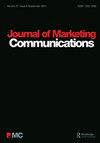求助PDF
{"title":"发展中国家的营销传播教育:来自印度和南非的大流行后见解","authors":"Holly B. Cooper, M. Ewing, L. Jayasinghe, Ilse Struweg, M. Wait","doi":"10.1080/13527266.2023.2208131","DOIUrl":null,"url":null,"abstract":"In two developing nations, technology enhanced marketing communication education in the classroom, both during and after the COVID-19 pandemic. However, in what ways did enhancement occur, and to what ends? This research examines the reasons for and impacts of digitalisation on academic delivery of marketing communication education across two BRICS nations: South Africa and India. We use a comparative, narrative-based approach that challenges the ways that marketing communication educators often describe the significant teaching and learning agencies and incidents involving the place of technology in classroom learning. We show how the concepts of technological augmentation and paradox, the `TikTok effect´, and symbiotic pedagogies explain and help present a post-pandemic theory of marketing communication education in developing nations. We highlight the active learning and student-centred learning styles as symbiotic pedagogies that were regarded as best practice. Our findings show that educators were able to skilfully move across both styles depending on student need and skills required. We discuss how educators' flexibility across contexts allowed them to maintain best practice technology-mediated teaching and learning strategies during the pandemic. © 2023 Informa UK Limited, trading as Taylor & Francis Group.","PeriodicalId":35919,"journal":{"name":"Journal of Marketing Communications","volume":" ","pages":""},"PeriodicalIF":0.0000,"publicationDate":"2023-05-09","publicationTypes":"Journal Article","fieldsOfStudy":null,"isOpenAccess":false,"openAccessPdf":"","citationCount":"0","resultStr":"{\"title\":\"Marketing communication education in developing countries: Post-pandemic insights from India and South Africa\",\"authors\":\"Holly B. Cooper, M. Ewing, L. Jayasinghe, Ilse Struweg, M. Wait\",\"doi\":\"10.1080/13527266.2023.2208131\",\"DOIUrl\":null,\"url\":null,\"abstract\":\"In two developing nations, technology enhanced marketing communication education in the classroom, both during and after the COVID-19 pandemic. However, in what ways did enhancement occur, and to what ends? This research examines the reasons for and impacts of digitalisation on academic delivery of marketing communication education across two BRICS nations: South Africa and India. We use a comparative, narrative-based approach that challenges the ways that marketing communication educators often describe the significant teaching and learning agencies and incidents involving the place of technology in classroom learning. We show how the concepts of technological augmentation and paradox, the `TikTok effect´, and symbiotic pedagogies explain and help present a post-pandemic theory of marketing communication education in developing nations. We highlight the active learning and student-centred learning styles as symbiotic pedagogies that were regarded as best practice. Our findings show that educators were able to skilfully move across both styles depending on student need and skills required. We discuss how educators' flexibility across contexts allowed them to maintain best practice technology-mediated teaching and learning strategies during the pandemic. © 2023 Informa UK Limited, trading as Taylor & Francis Group.\",\"PeriodicalId\":35919,\"journal\":{\"name\":\"Journal of Marketing Communications\",\"volume\":\" \",\"pages\":\"\"},\"PeriodicalIF\":0.0000,\"publicationDate\":\"2023-05-09\",\"publicationTypes\":\"Journal Article\",\"fieldsOfStudy\":null,\"isOpenAccess\":false,\"openAccessPdf\":\"\",\"citationCount\":\"0\",\"resultStr\":null,\"platform\":\"Semanticscholar\",\"paperid\":null,\"PeriodicalName\":\"Journal of Marketing Communications\",\"FirstCategoryId\":\"1085\",\"ListUrlMain\":\"https://doi.org/10.1080/13527266.2023.2208131\",\"RegionNum\":0,\"RegionCategory\":null,\"ArticlePicture\":[],\"TitleCN\":null,\"AbstractTextCN\":null,\"PMCID\":null,\"EPubDate\":\"\",\"PubModel\":\"\",\"JCR\":\"Q1\",\"JCRName\":\"Business, Management and Accounting\",\"Score\":null,\"Total\":0}","platform":"Semanticscholar","paperid":null,"PeriodicalName":"Journal of Marketing Communications","FirstCategoryId":"1085","ListUrlMain":"https://doi.org/10.1080/13527266.2023.2208131","RegionNum":0,"RegionCategory":null,"ArticlePicture":[],"TitleCN":null,"AbstractTextCN":null,"PMCID":null,"EPubDate":"","PubModel":"","JCR":"Q1","JCRName":"Business, Management and Accounting","Score":null,"Total":0}
引用次数: 0
引用
批量引用
Marketing communication education in developing countries: Post-pandemic insights from India and South Africa
In two developing nations, technology enhanced marketing communication education in the classroom, both during and after the COVID-19 pandemic. However, in what ways did enhancement occur, and to what ends? This research examines the reasons for and impacts of digitalisation on academic delivery of marketing communication education across two BRICS nations: South Africa and India. We use a comparative, narrative-based approach that challenges the ways that marketing communication educators often describe the significant teaching and learning agencies and incidents involving the place of technology in classroom learning. We show how the concepts of technological augmentation and paradox, the `TikTok effect´, and symbiotic pedagogies explain and help present a post-pandemic theory of marketing communication education in developing nations. We highlight the active learning and student-centred learning styles as symbiotic pedagogies that were regarded as best practice. Our findings show that educators were able to skilfully move across both styles depending on student need and skills required. We discuss how educators' flexibility across contexts allowed them to maintain best practice technology-mediated teaching and learning strategies during the pandemic. © 2023 Informa UK Limited, trading as Taylor & Francis Group.


